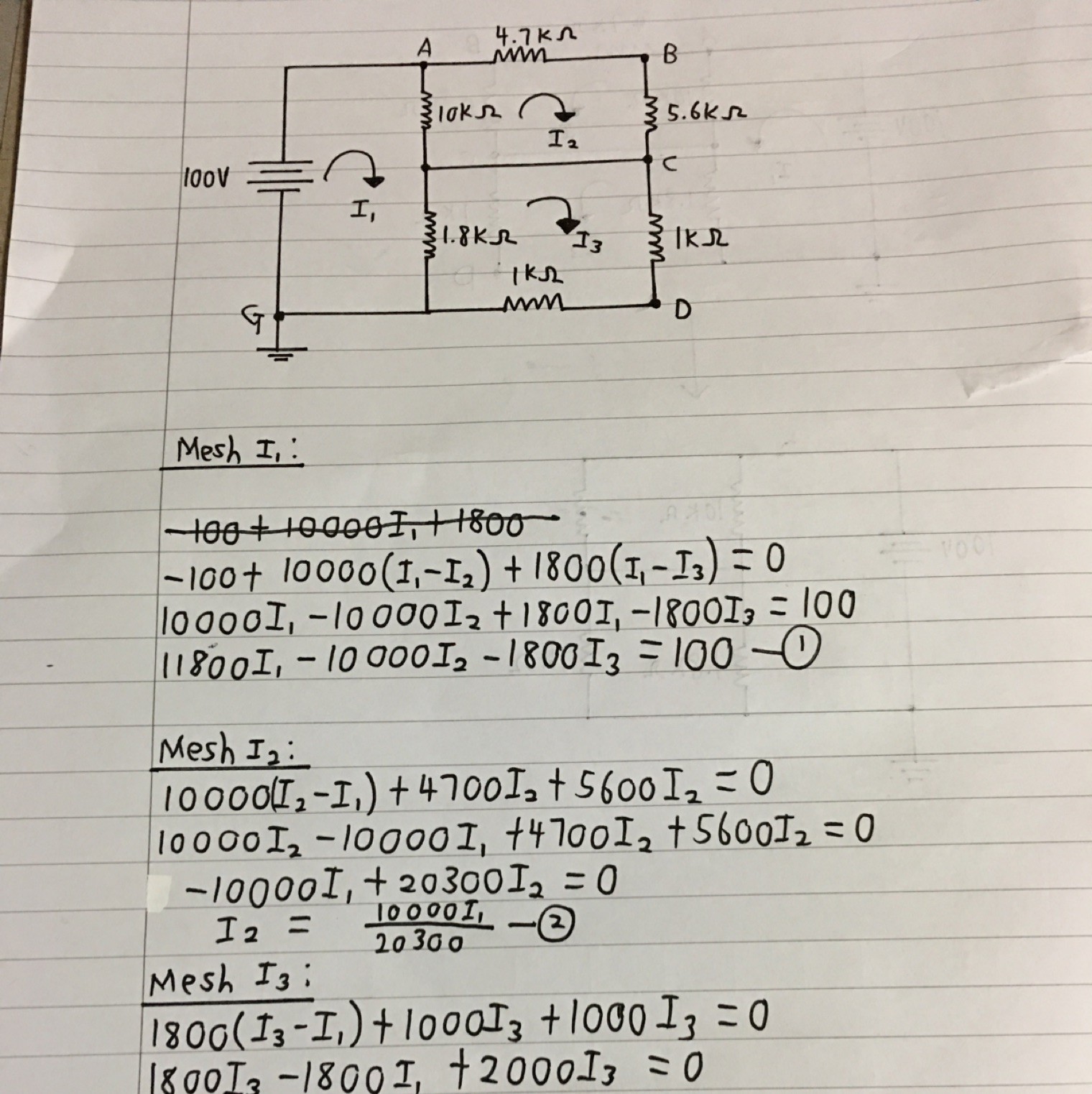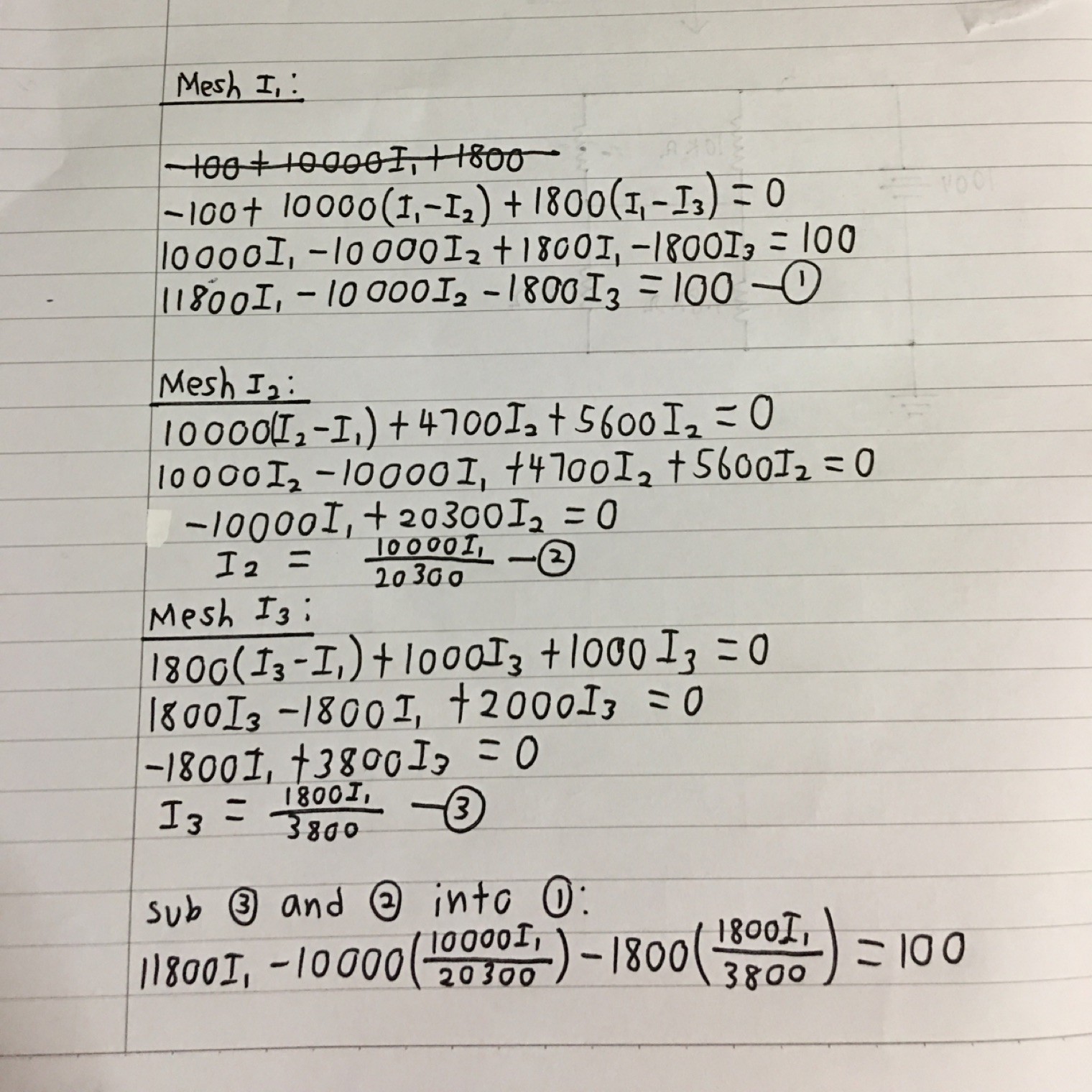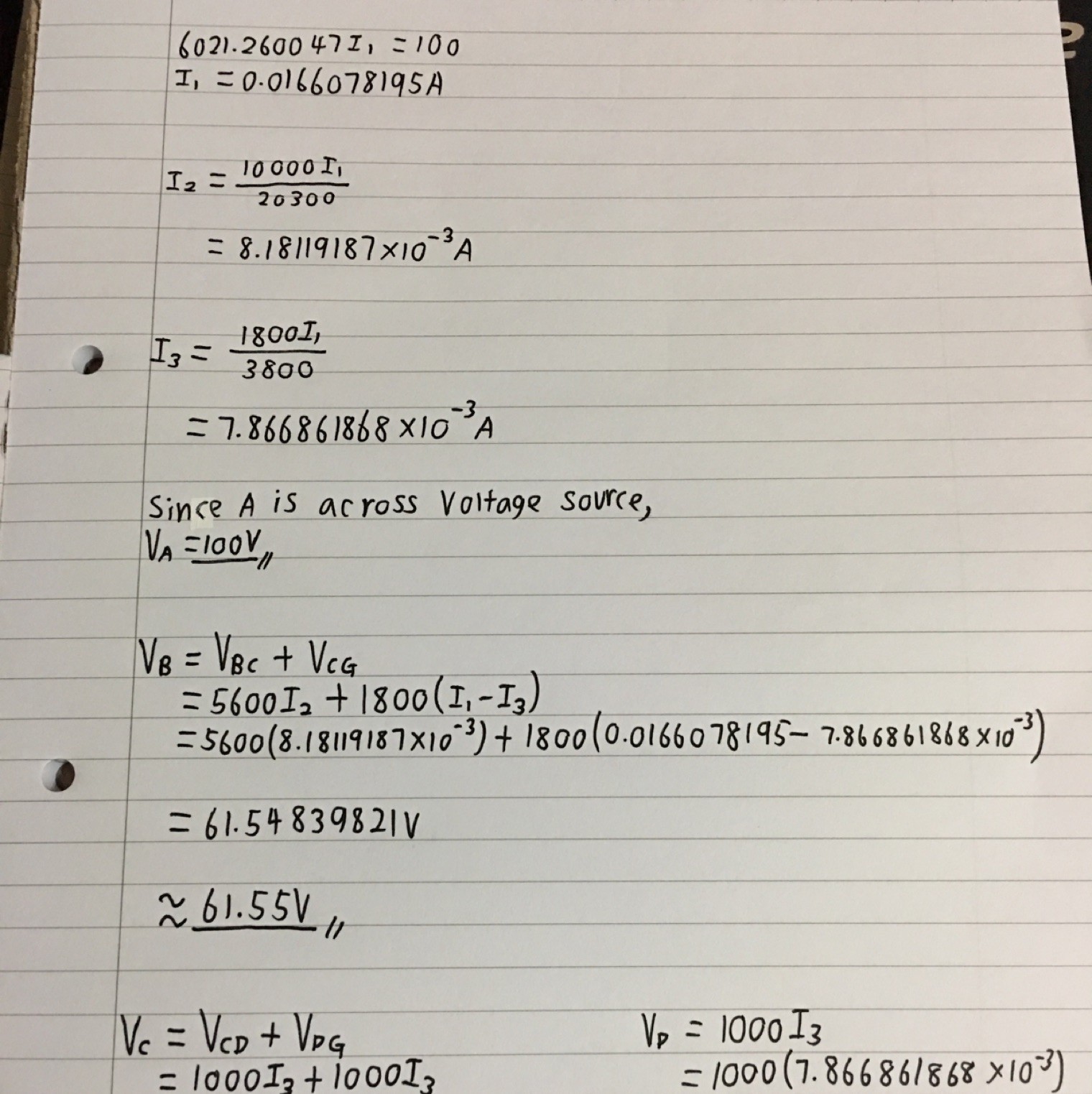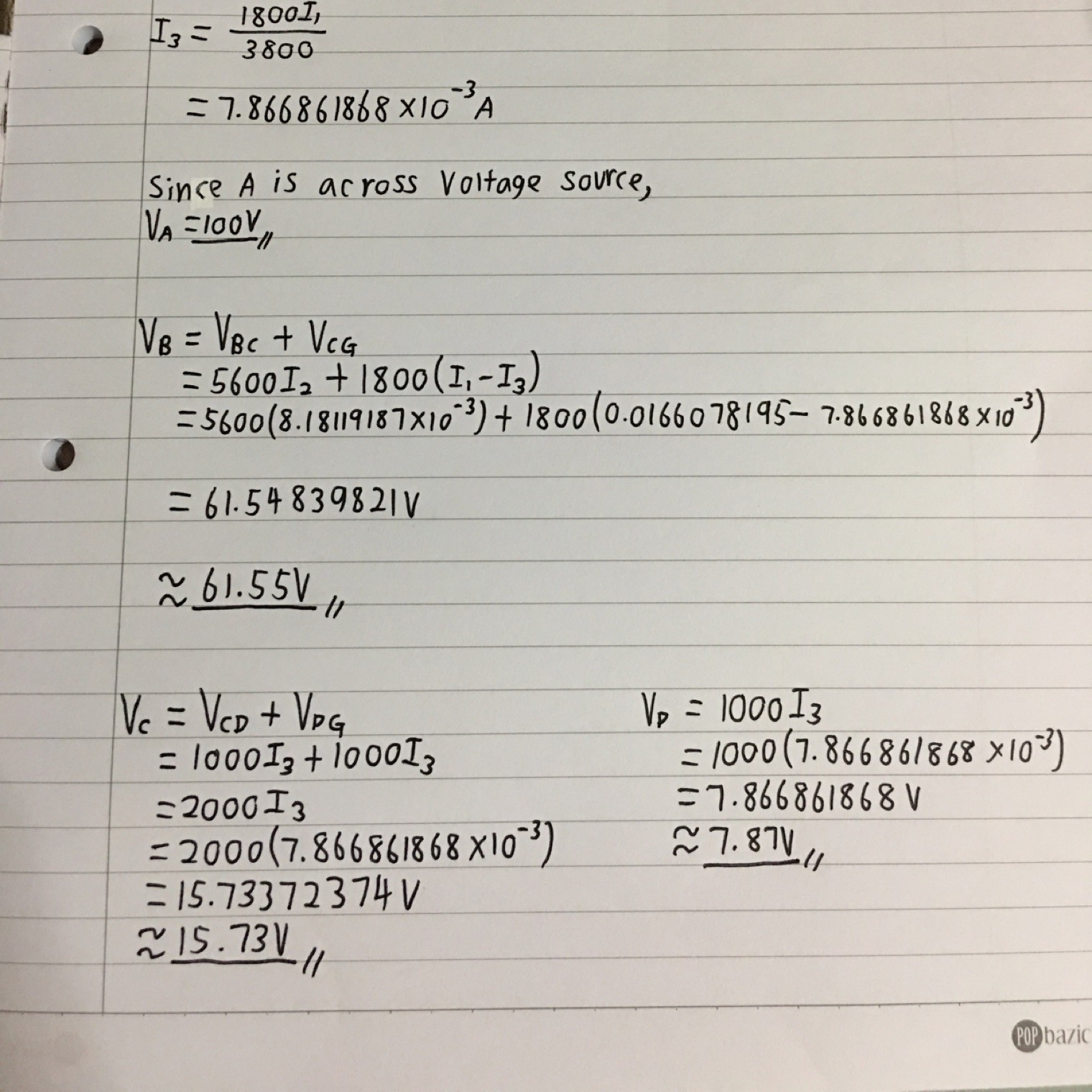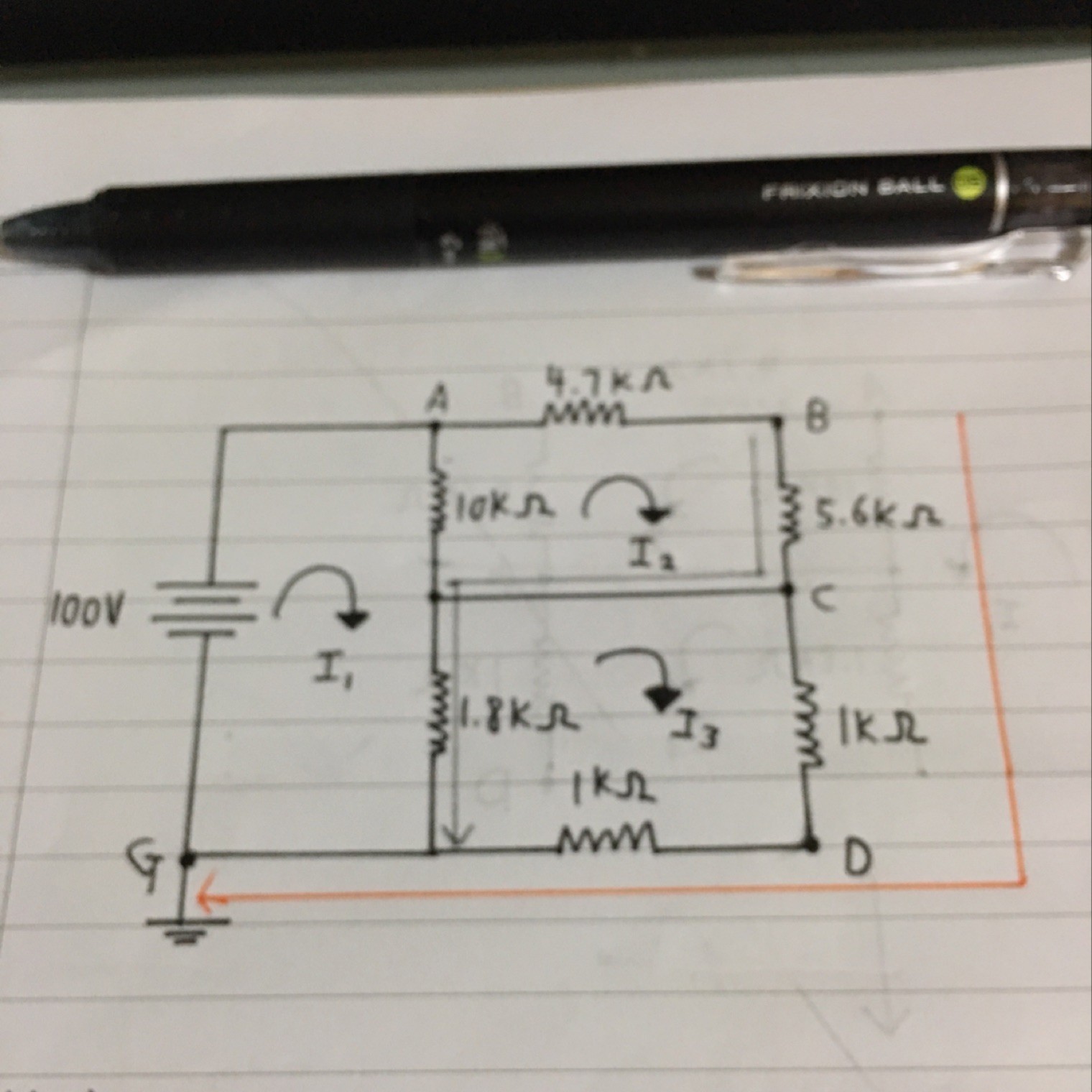Ask Singapore Homework?
Upload a photo of a Singapore homework and someone will email you the solution for free.

See 5 Answers
done
{{ upvoteCount }} Upvotes
clear
{{ downvoteCount * -1 }} Downvotes
Part 1
Date Posted:
7 years ago
thank you
thank you
done
{{ upvoteCount }} Upvotes
clear
{{ downvoteCount * -1 }} Downvotes
Part 2
Date Posted:
7 years ago
done
{{ upvoteCount }} Upvotes
clear
{{ downvoteCount * -1 }} Downvotes
Part 3
Date Posted:
7 years ago
done
{{ upvoteCount }} Upvotes
clear
{{ downvoteCount * -1 }} Downvotes
Part 4
Date Posted:
7 years ago
sorry i still don't understand why VB=VBC+VCG
done
{{ upvoteCount }} Upvotes
clear
{{ downvoteCount * -1 }} Downvotes
There are two path that can be used to find Voltage at point B with respect to ground. The two path are indicated by the black arrow and the orange arrow. From the circuit it can be seen that the top part of the circuit has higher potential compared to lower parts hence to find potential at point B. We can find potential at point C with respect to ground and then add it with the voltage at point BC
Date Posted:
7 years ago


